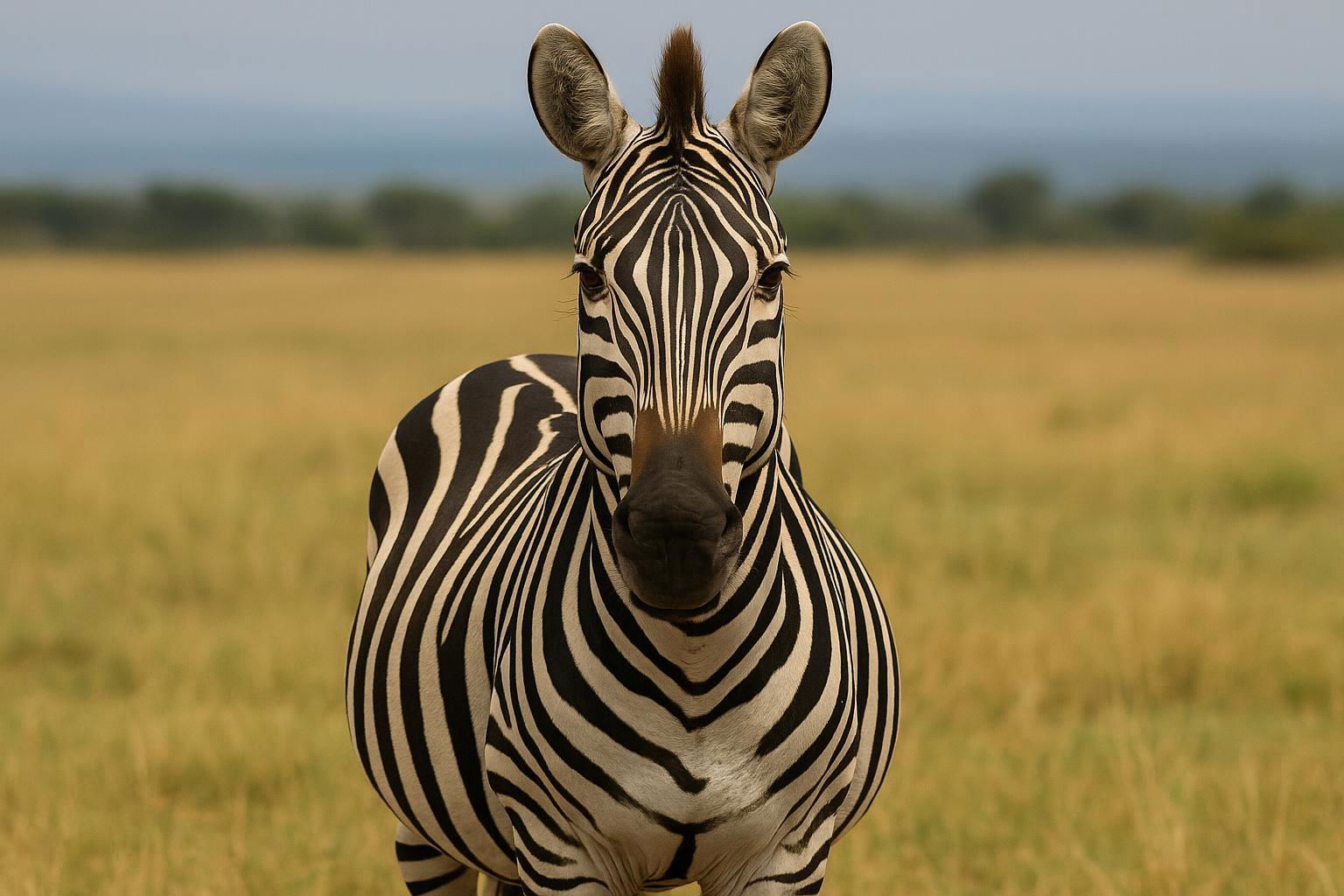
Plains Zebra
Equus quagga
The Plains Zebra, scientifically known as Equus quagga, is one of the most recognizable and iconic animals on the African savanna. Renowned for their striking black and white stripes, each individual has a unique pattern that serves both to deter predators and to assist in social bonding within their herds. Plains Zebras are widely distributed across eastern and southern Africa, from the scrublands of eastern Sudan to the open grasslands and savannas of South Africa.
These zebras are highly social creatures, often forming large herds that can sometimes number in the thousands during migratory periods in search of fresh grazing grounds. Family groups typically consist of a stallion, several mares, and their offspring, with strong social structures and bonds crucial for protection against predators such as lions and hyenas.
Plains Zebras are primarily grazers, feeding on a diet of grasses, although they also consume leaves and stems when fresh grass is scarce. Adapted to a nomadic lifestyle, they require a reliable water source and can often be seen congregating around waterholes, especially during the dry season.
Although the Plains Zebra is not currently considered endangered, habitat loss and competition with livestock pose ongoing threats to their populations. Conservation efforts are in place to ensure that these charismatic animals continue to thrive across their vast range, maintaining their vital role in the ecosystem as both grazers and a key species in the food web.

 All Species & Breeds
All Species & Breeds
 Highland Cattle
Highland Cattle
 Miniature Donkeys
Miniature Donkeys
 All Species Directory
All Species Directory
 Highland Cattle in Virginia
Highland Cattle in Virginia
 Miniature Donkeys in Texas
Miniature Donkeys in Texas












